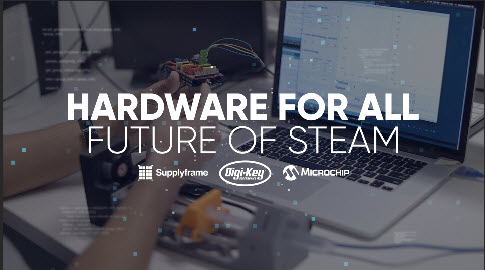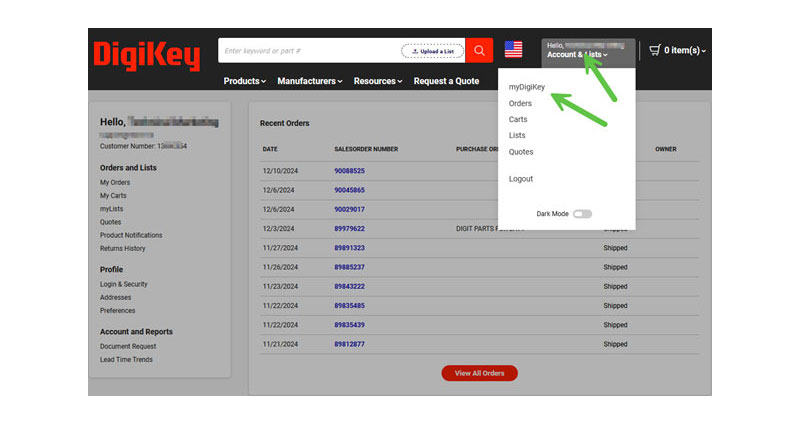Fully Equipped Development Kits Simplify STEAM Education and Prototyping for Pros and Makers Alike
Development kits for single board computers (SBCs) provide additional hardware and software options to increase their functionality for educators, makers, and professional designers. They are often project-specific, meaning the add-ons are to develop a specific application such as robotics, home automation, sensor monitoring, and more. They have grown in popularity because of their ease of use, availability, and low cost.
Development kits allow users to begin integrating hardware and software into existing or new projects with minimal or no need to purchase aftermarket add-ons. These add-ons provide increased functionality and can include microcontrollers, sensors, relays, motors, LEDs, speakers, buttons/switches, breadboards, and wiring. Kit providers will often bundle them to suit specific projects by providing add-ons such as servomotors, cameras, and navigational equipment for robotics, or temperature, humidity, and precipitation sensors for remote environmental monitoring. The hardware configurations are as numerous as the kits, each containing the necessary parts to get projects up and running quickly and efficiently.
These kits can also include software designed for use with the SBC and its onboard system-on-chip (SoC) or microcontroller, making it easy to program designs with little to no programming experience. These often come in the form of integrated development environments (IDEs), software development kits (SDKs), and drag-and-drop (or visual-based) programming interfaces that allow users to program by dropping actions and functions in the form of blocks or icons. Some vendors even include learning materials in the form of guides, videos, and step-by-step instructions to further facilitate programming.
With that in mind, let’s look at several popular development kits, one each from Arduino, Seeed Studio, and Taoglas, and see how they help with education, the design of Internet of Things (IoT) applications, and remote wireless sensing applications, respectively.
Comprehensive STEAM education kit
The Arduino AKX00002 CTC 101 Program Kit was designed for science, technology, engineering, the arts, and mathematics (STEAM) education and includes a toolbox with more than 25 projects and experiments with online access to teaching materials (Figure 1). The kit is loaded with up to 700 components, including six Arduino 101 development boards outfitted with Bluetooth, an inertial measurement unit (IMU), 14 digital input/output (I/O) pins, and a USB connector for serial communication and sketch upload, and more.
 Figure 1: The AKX00002 Arduino CTC 101 Program kit is designed for STEAM education and includes enough hardware for more than 25 projects. (Image source: Arduino)
Figure 1: The AKX00002 Arduino CTC 101 Program kit is designed for STEAM education and includes enough hardware for more than 25 projects. (Image source: Arduino)
It also includes six Arduino Shields. These are add-on boards that provide increased functionality, including sensors, motors, and other technologies to enhance projects. It also includes over ten breadboards, electronic components (sensors, LEDs, capacitors, diodes, buttons), plug-and-play modules, batteries, cables, webcams, SD cards, speakers, and more.
IoT with Raspberry Pi and Grove modules
Seeed Studio and Microsoft worked together to develop the Microsoft IoT Grove Kit to facilitate the rapid development of IoT projects using the Raspberry Pi (not included) and Seeed’s Grove add-on modules. The modules are similar to Arduino’s Shield boards but are particularly straightforward for use with the Pi due to the novel plug-and-play connection system. The kit includes a GrovePi+ cape that’s fully compatible with the Raspberry Pi B/B+/A+/2 boards, and it runs the Windows 10 IoT Core operating system for easy application development. It also packs a five-inch touchscreen display, a relay module, a temperature/humidity sensor, and an ultrasonic range sensor.
 Figure 2: The Microsoft IoT Grove Kit is designed for IoT projects using the Raspberry Pi (not included) and Grove add-on modules, enabling rapid connectivity and prototyping. (Image source: Seeed Studio)
Figure 2: The Microsoft IoT Grove Kit is designed for IoT projects using the Raspberry Pi (not included) and Grove add-on modules, enabling rapid connectivity and prototyping. (Image source: Seeed Studio)
Additional hardware includes an LED bar, rotary angle sensor, buzzer, sound sensor, light sensor, button, LCD RGB backlight, micro USB cable, and 10 Grove cables. Microsoft also provides detailed tutorials on becoming familiar with the Grove platform and module functionality for easy project development.
Wireless sensing and cloud management
For IoT projects requiring wireless sensing, data collection, and cloud-based management, the Taoglas ELC.10B EDGE IoT Starter Kit comes loaded with suitable features. The kit is a comprehensive wireless communications package with a cloud-based management platform in an easy-to-use package that offers cellular, Bluetooth, onboard sensors, and two satellite positioning options: multi-band Global Navigation Satellite System (GNSS), and real-time kinematic (RTK). What’s more, it comes preconfigured with an active cellular plan based on the user’s requirements, making for easy deployment. Access is done via a cloud-based management platform, so projects can be accessed anywhere.
 Figure 3: The ELC.10B EDGE IoT Star Kit brings wireless connectivity options to IoT projects with cloud-based management. (Image source: Taoglas)
Figure 3: The ELC.10B EDGE IoT Star Kit brings wireless connectivity options to IoT projects with cloud-based management. (Image source: Taoglas)
The ELC-10B comes with Taoglas’s Edge Insights cloud-based, real-time analytics software platform with network, sensor, security, and data management.
The GNSS with RTK capability gathers precision positioning data in minutes and features a full IoT security stack, power and device management, and data as a service (DaaS). The platform comes with plenty of sensors, including temperature/humidity, accelerometer, gyroscope, magnetometer, light, and air. It also offers cellular support for LTE, 3G, 2G, Cat-M, and NB-IoT, allowing it to operate globally.
Conclusion
These are just a few examples of the development kits currently available to help educators, makers, and designers alike quickly learn and apply SBCs. It’s important to note that kits can vary immensely depending on the project. That said, choosing which is best boils down to the requirements and feature sets that best facilitate student learning and the designers’ needs.

Have questions or comments? Continue the conversation on TechForum, DigiKey's online community and technical resource.
Visit TechForum











